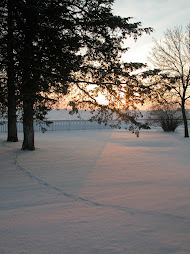 Deep inside this mountain in the remote Arctic archipelago of Svalbard, Norway, a gigantic vault is being constructed. Yes, construction is occurring inside the mountain. When complete next February, the new vault will be roughly half the length of a football field; it also will be the most secure facility of its kind in the world.
Deep inside this mountain in the remote Arctic archipelago of Svalbard, Norway, a gigantic vault is being constructed. Yes, construction is occurring inside the mountain. When complete next February, the new vault will be roughly half the length of a football field; it also will be the most secure facility of its kind in the world.Svalbard is located less than 100 miles from the North Pole. It’s accessible only by sea or air; it’s not the kind of place one stumbles upon by happenstance or bumbles into unnoticed.
So what’s so valuable that it needs to be protected by steel, rock, permafrost and the occasional polar bear?
Seeds.
The Svalbard International Seed Vault is being constructed to protect, and thereby preserve, the planet's crop diversity. The seeds housed in the vault will represent every variety of food known to man. You might not be aware, but there are more than one hundred thousand varieties of rice. (Uncle Ben’s isn’t one of them.)
The world’s crops are vulnerable to natural disasters yet are also at risk in areas of civil unrest or war. In 1992, Afghanistan’s national seed collection was destroyed by mujahedeen fighters. Last month, a Typhoon sent a wall of water and mud through field collections in the Philippines, washing away banana, taro, sweet potato and pigeon pea varieties that held global importance. Catastrophic events aside, bio-diversity is a laudable goal in an era where climate change, pests, and disease present growers with significant challenges.
Stored at sub-zero temperatures, scientists estimate the seeds deposited in the vault could last hundreds, even thousands of years.
The Global Crop Diversity Trust, an initiative launched by the United Nations in 2001, will help operate the vault and the project has generated sizeable donations from corporations and the Bill and Melinda Gates Foundation, which recently pledged support to the tune of thirty million dollars. It is also supported by more than one hundred countries. Even Ethiopia, one of the world’s poorest countries, has pledged financial support.







